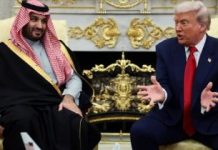The tenure of U.S. President Donald Trump marked a significant shift in China-U.S. relations, characterized by turbulence, unpredictability, and a departure from traditional diplomatic approaches. The once interdependent economic relationship between the world’s two largest economies experienced a downturn, as Trump’s administration pursued an aggressive stance aimed at countering China’s growing global influence. The policies enacted during his presidency reshaped the trajectory of bilateral ties, leaving lasting implications that continue to shape international geopolitics.
One of the most defining aspects of Trump’s approach to China was the trade war that erupted in 2018. The administration imposed steep tariffs on Chinese imports, citing unfair trade practices, intellectual property theft, and market restrictions imposed by Beijing. China retaliated with counter-tariffs, creating a cycle of economic hostilities that disrupted global supply chains and affected businesses and consumers in both nations. Despite multiple rounds of negotiations, a comprehensive resolution remained elusive, with partial agreements failing to fully mend the growing rift.
Beyond trade disputes, the Trump administration took unprecedented steps in challenging China’s geopolitical ambitions, particularly in areas of technological dominance and military expansion. The blacklisting of Chinese tech giants such as Huawei, citing national security concerns, marked a dramatic escalation in technological decoupling. Furthermore, Trump reinforced American support for Taiwan, a move that incensed Beijing and added strain to the already fragile diplomatic relations. The South China Sea tensions also intensified as the U.S. took a more confrontational stance against China’s territorial claims in the region, amplifying concerns over military conflict.
The COVID-19 pandemic further exacerbated tensions, with Trump repeatedly blaming China for the virus outbreak and branding it the “China virus,” a term that fueled animosity. The deteriorating trust between Washington and Beijing hindered meaningful cooperation in addressing global health challenges, with mutual accusations overshadowing any attempts at diplomatic reconciliation. Human rights issues, including Beijing’s actions in Hong Kong and against the Uighur Muslim population, were also met with U.S. sanctions, drawing fierce rebuttals from Chinese officials.
Despite the hostilities, certain areas of engagement persisted. The Phase One trade deal, signed in early 2020, sought to alleviate economic tensions, with China committing to increased purchases of American goods. However, implementation faced challenges as broader disagreements persisted, illustrating the difficulty in achieving lasting stability.
Trump’s tenure redefined China-U.S. relations, shifting the dynamic from cautious engagement to open confrontation. His approach, rooted in economic nationalism and geopolitical competition, set the stage for a more adversarial relationship that extended beyond his presidency. As subsequent administrations navigate this complex landscape, the echoes of Trump’s policies continue to shape diplomatic strategies, influencing decisions that will define the future of global power dynamics.
What is clear is that US-China economic relations have entered a new, more confrontational phase during Trump second term—one that may persist regardless of who wins the trade war. Trump’s role in shaping this trajectory cannot be understated. His combative trade strategy not only reset Washington’s stance on China but also recalibrated the political consensus around trade protectionism. The recent US, China tariff row seems to have been resolved amicably and one must hope this turns out to be a sustained effort.

















